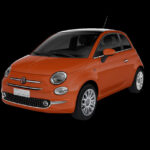Traditionally known as a producer of well-built, quality cars that gave sportscar-like performance on the highway something obviously went horribly wrong in the period 1969 to 1976 when Fiat models 850, 124, 126, 127 and 128 suffered severe rust and corrosion problems and the little cars practically disintegrated before their owners’ eyes. Not only were their bodies affected but also chassis corrosion was endemic in Europe, North America and Australia.
So bad was the problem in America that the US government took the unusual step of suing the manufacturer for failing to recall 133,500 severely rusting 1970/71 850 models and the Canadian government struck a deal with Fiat Canada to recall and rustproof all their rapidly oxidising Fiats. Even with the recall and rustproofing, deterioration recommenced, unabated.
Suspension and steering problems, caused by corrosion, were also among the defects making 1969-76 Fiat owners, particularly those who owned 127 models, quite miserable. Frequent engine and clutch breakdowns further plagued these cars. It was a pity that the rust problems had arisen as the cars were mechanically well designed and because of their size – wheelbases of around 2.3 metres – they had the potential to garner a much greater market share for Fiat. They were however the victim of Ralph Nader’s `unsafe at any speed’ rhetoric and like many US made cars in the 70s were subject to extreme quality control scrutiny by government agencies as some of the worst quality control fiascos were poured onto an unsuspecting motoring public.
It had to compete in Australia with cars such as the Honda Civic 1200 and other small but conventional Japanese cars and although a price premium was asked Fiat had no problem selling their allocation due to brilliant space-saving engineering, a practical if boxy body shape, refined suspension and surprising performance and exceptional economy from the smallest engine available in Australia at the time. Even with hard driving owners were reporting fuel consumption figures between 13 and 14 km/l.
Where the Fiat 127 had a definite disadvantage compared with its Japanese competitors was in its interior finish which was practical but lacked the visual appeal of the Japanese.
The Fiat had a parcel shelf but lacked a glove box, it had rubber mats rather than carpets, no radio and a crude face level ventilation system and ineffective fresh air vents for the feet. The upholstery seemed tough but was unattractive to look at.
The 127s biggest advantage, of course, was the hatchback design. The rear seat cushion folded up against the front seat backs and the squab then lay flat to form a very useful luggage area. In all a fun car to drive that was practical and efficient, if noisy.










